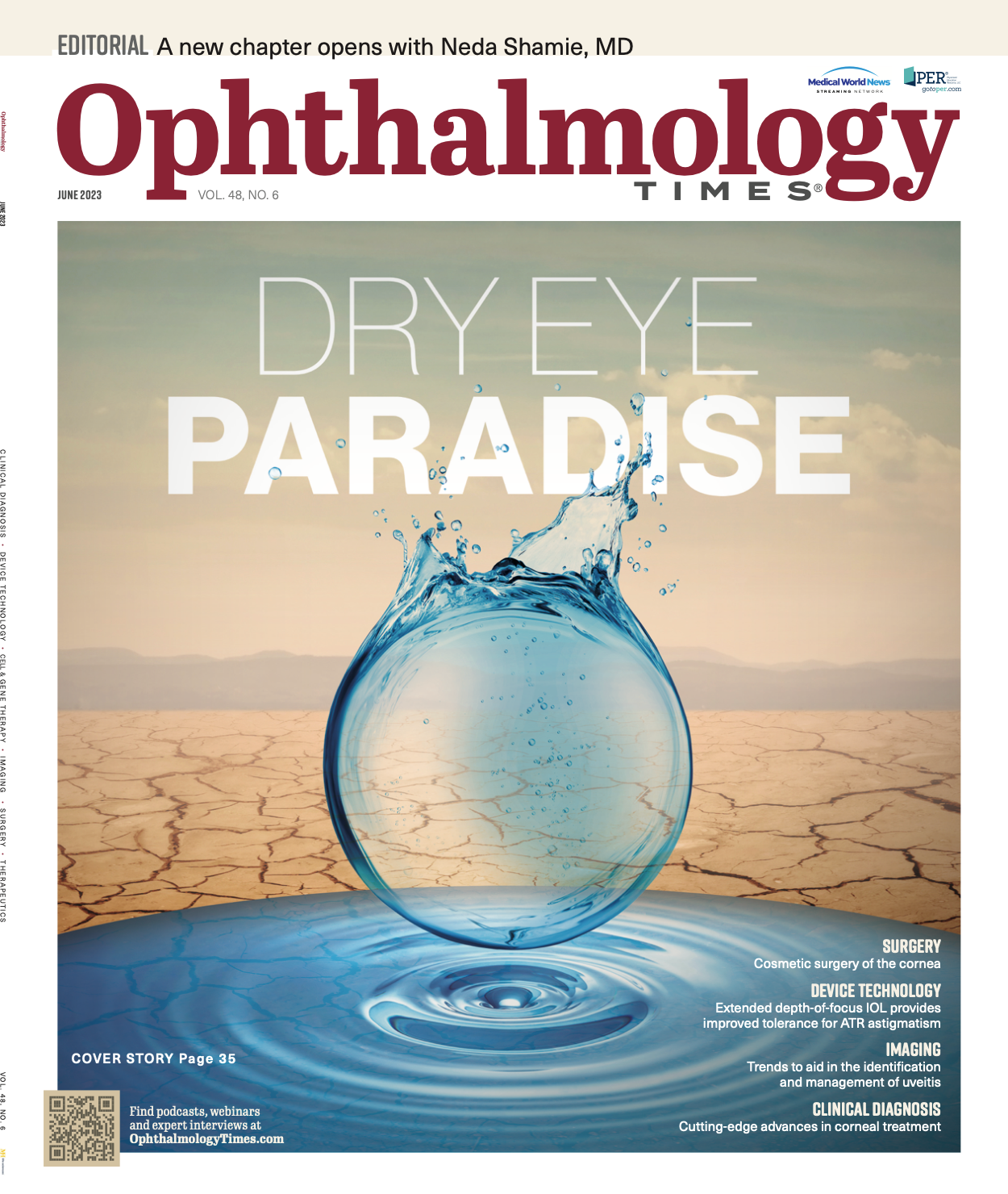- COVID-19
- Biosimilars
- Cataract Therapeutics
- DME
- Gene Therapy
- Workplace
- Ptosis
- Optic Relief
- Imaging
- Geographic Atrophy
- AMD
- Presbyopia
- Ocular Surface Disease
- Practice Management
- Pediatrics
- Surgery
- Therapeutics
- Optometry
- Retina
- Cataract
- Pharmacy
- IOL
- Dry Eye
- Understanding Antibiotic Resistance
- Refractive
- Cornea
- Glaucoma
- OCT
- Ocular Allergy
- Clinical Diagnosis
- Technology
Optimizing the implementation of ISBCS
Surgeons must use caution to avoid pitfalls of complicated procedure
(Image Credit: AdobeStock/Georgii)

Reviewed by Steve Arshinoff, MD, FRCSC
To avoid complications, immediate sequential bilateral cataract surgery (ISBCS) should be performed by highly experienced surgeons in accordance with the guidelines, said Steve Arshinoff, MD, FRCSC, author of a textbook on the subject and holder of academic appointments at the University of Toronto and McMaster University (Hamilton, Ontario), Ben Gurion University of the Negev, in Beer Sheba, Israel, and Airlangga University, in Indonesia.
“It is my firm belief that the natural progression of cataract surgery is to bilateral surgery,” Arshinoff told attendees at the 2023 Toronto Cataract Course.
When the COVID-19 pandemic hit, surgeons became increasingly interested in performing ISBCS to decrease the need for patient visits and contact with surgical offices, said Arshinoff, noting that requirements for room cleaning at the start of the pandemic led to a decrease in the number of unilateral procedures performed in a single day.
Arshinoff, who pioneered ISBCS and has performed more than 11,000 such surgeries during his career, said that he is committed to ensuring surgeons avoid all possible pitfalls. His book “was written to inform the reader [on] how to minimize the complications that we expect to see when the whole world starts to adopt bilateral cataract surgery,” he noted, adding, “I feel a responsibility as the first person in the world to do this.”
In addition, the International Society of Bilateral Cataract Surgeons has developed guidelines to make certain that same-day surgery is safe. And when is it so? “When every single step of your surgery has been perfected…[and] you are confident…that you have got it down right and your complication rate is very low. Only then can the surgeon start doing bilateral surgery,” Arshinoff stressed.
An adverse event reported with ISBCS is postoperative endophthalmitis (POE). To curtail the risk of it, aseptic separation of the first and second surgeries is compulsory, as is the use of intracameral antibiotics.
Surgeons who are new to bilateral surgery should not perform it on diabetics with macular edema, patients with lid infections like blepharitis or chalazia, those who have cataracts with colobomas, Fuchs endothelial dystrophy with pachymetry greater than 630 to 650 microns, or severe pseudoexfoliation, among others.
When there is a delay of several weeks between cataract surgeries, patients are more at risk of falling than when surgery is performed the same day on both eyes, Arshinoff said.
A Canadian study published in 2022 reviewed 2003 consecutive patients (4006 eyes) with a mean age of 74 who had undergone ISBCS with topical anesthesia between January 2019 and December 2019.1 Investigators found few complications, and those that did occur were not attributable to the bilateral approach.
Results of an earlier study of 125,000 eyes on which members of the International Society of Bilateral Cataract Surgeons had performed bilateral surgery showed infection rates to be very low: 1 in 16,800 (0.006%) in those who had received intracameral antibiotics.2
Data from the Swedish National Cataract Registry looked at 1,457,172 cataract extractions, including 1,364,934 unilateral surgeries and 92,238 bilateral ones. Over a period of 16 years, the reported incidence of POE was lower in ISBCS than in delayed sequential bilateral cataract surgery (DSBCS): 1:6,600 vs 1:3,345, respectively. Nonuse of intracameral antibiotics, capsule complication, patient age of 85 years or more, male gender, and ocular comorbidity were found to be independent risk factors for POE.3
An American study that compared ISBCS and DSBCS in terms of best-corrected visual acuity (BCVA) found the refractive outcome of BCVA to be noninferior in ISBCS.4
Some concerns have been raised about IOL power and ensuring that each eye receives optimal IOL. Arshinoff observed that IOL errors are reduced when operating room personnel is familiar with the calculation methods used.
Arshinoff said money shouldn't be the incentive. “You should not do either unilateral surgery because it makes you more money or bilateral surgery because it saves money,” he said, “You should do what is better for the patient.”
Many patients, for their part, opt for bilateral surgery because of the convenience it offers, Arshinoff pointed out. “Of course, patients do like same-day bilateral surgery because they only have to come…one time,” he said. “In…surveys in multiple institutions, more than 70% of patients request ISBCS when they know it is an option,” he concluded.
Steve Arshinoff MD, FRCSC
E: ifix2is@gmail.com
Arshinoff is the chief author and editor of Immediately Sequential Bilateral Cataract Surgery (ISBCS): Global History and Methodology.
References:
1. Qi SR, Arsenault R, Hébert M, et al. Immediately sequential bilateral cataract surgery: an academic teaching center’s experience. J Cataract Refract Surg. 2022;48(3):310-316. doi:10.1097/j.jcrs.0000000000000750
2. Arshinoff SA, Bastianelli PA. Incidence of postoperative endophthalmitis after immediate sequential bilateral cataract surgery. J Cataract Refract Surg. 2011;37(12):2105-2114. doi:10.1016/j.jcrs.2011.06.036
3. Friling E, Johansson B, Lundström M, Montan P. postoperative endophthalmitis in immediate sequential bilateral cataract surgery: a nationwide registry study. Ophthalmology. 2022;129(1):26-34. doi:10.1016/j.ophtha.2021.07.007
4. Herrinton LJ, Liu L, Alexeeff S, Carolan J, Shorstein NH. Immediate sequential vs. delayed sequential bilateral cataract surgery: retrospective comparison of postoperative visual outcomes. Ophthalmology. 2017;124(8):1126-1135. doi:10.1016/j.ophtha.2017.03.034

